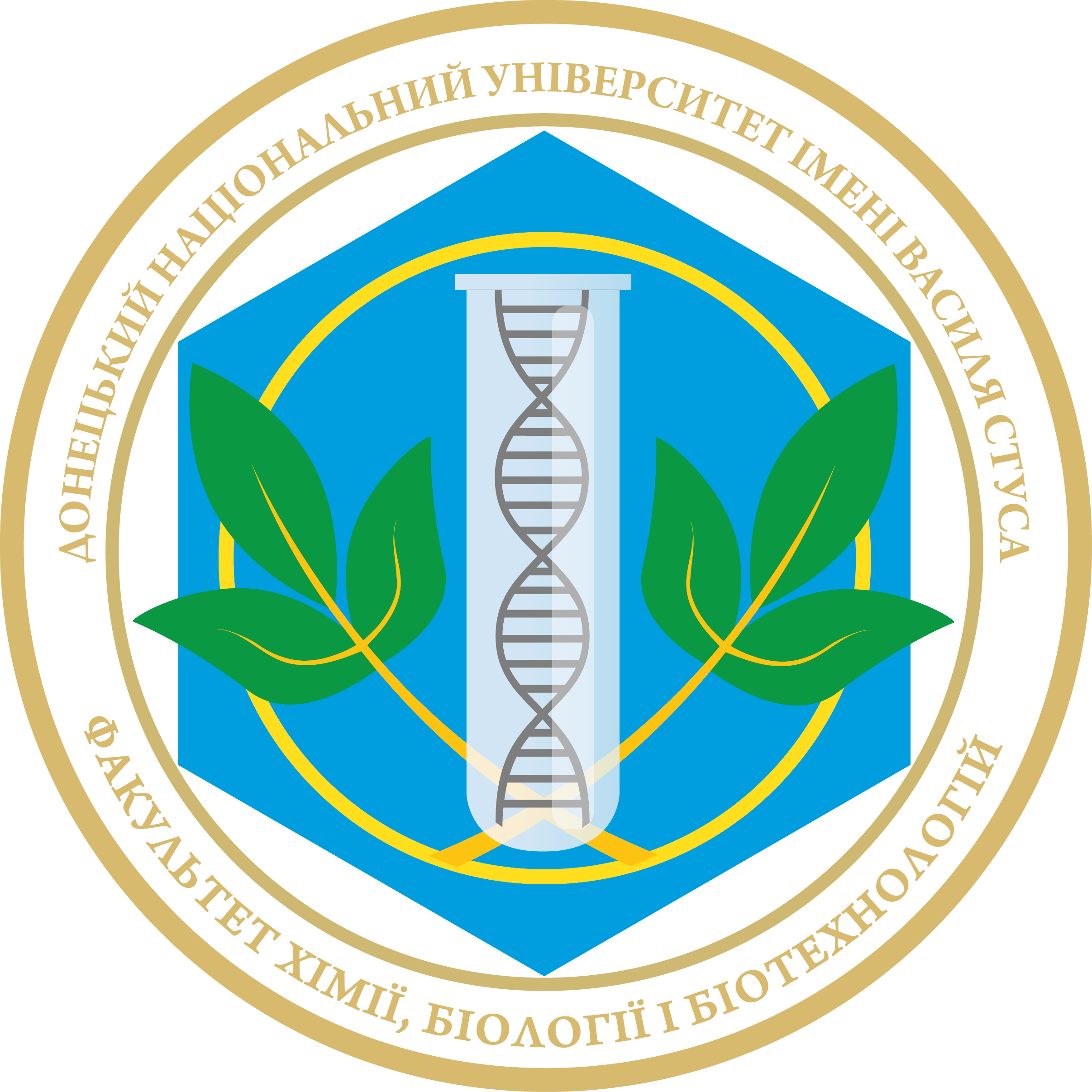History of the Department of Inorganic, Organic and Analytical Chemistry
The Department of Inorganic, Organic and Analytical Chemistry was established on March 1, 2018 from three departments: Inorganic Chemistry, Organic Chemistry and Analytical Chemistry, each of which begins its history since the establishment of the Faculty of Chemistry of Donetsk State University (1965). The first head of the department is professor, Doctor of chemical sciences Heorhii Rozantsev. The department performs work in three main areas: educational process, scientific research, teaching and methodical work.
The department trains specialists in “Chemistry”, which includes the directions “Inorganic Chemistry” and “Organic Chemistry” and “Analytical Chemistry” for the chemical, metallurgical, coal, pharmaceutical and food industries; radio electronics, chemical ecology and household chemicals; research institutes and research associations, research institutes and small enterprises; university teachers, and educational institutions.
Areas of research:
-
Investigation of the state of ions of polyoxoxmetalates of d-elements of V-VI groups in aqueous, water-organic and physiological solutions and synthesis of salts of polyoxometalates for industry and medicine.
-
Prediction of phase stability and isomorphous substitutions in solid solutions of different structural types.
-
Chemistry of oxiranes: reactivity and mechanism, catalysis of reactions with proton-containing nucleophiles, modeling of reactions synthesis of polymeric materials based on epoxy compounds.
-
Investigation of the phenomenon of isoparametricity by kinetic and correlation methods.
-
Chemical-analytical monitoring of sources of decentralized water supply.
Areas of scientific and methodological work:
- Development of distance courses, in particular, on the MOODLE distance learning platform, preparation of tests for the courses of the department.
- Work on methodological commissions and juries of competitions and competitions for gifted youth.
- Preparation of tutorials for the department’s courses and for work with gifted youth.
- Teachers, heads of laboratories, researchers, teaching and support staff, graduate students and students of the department provide this work.
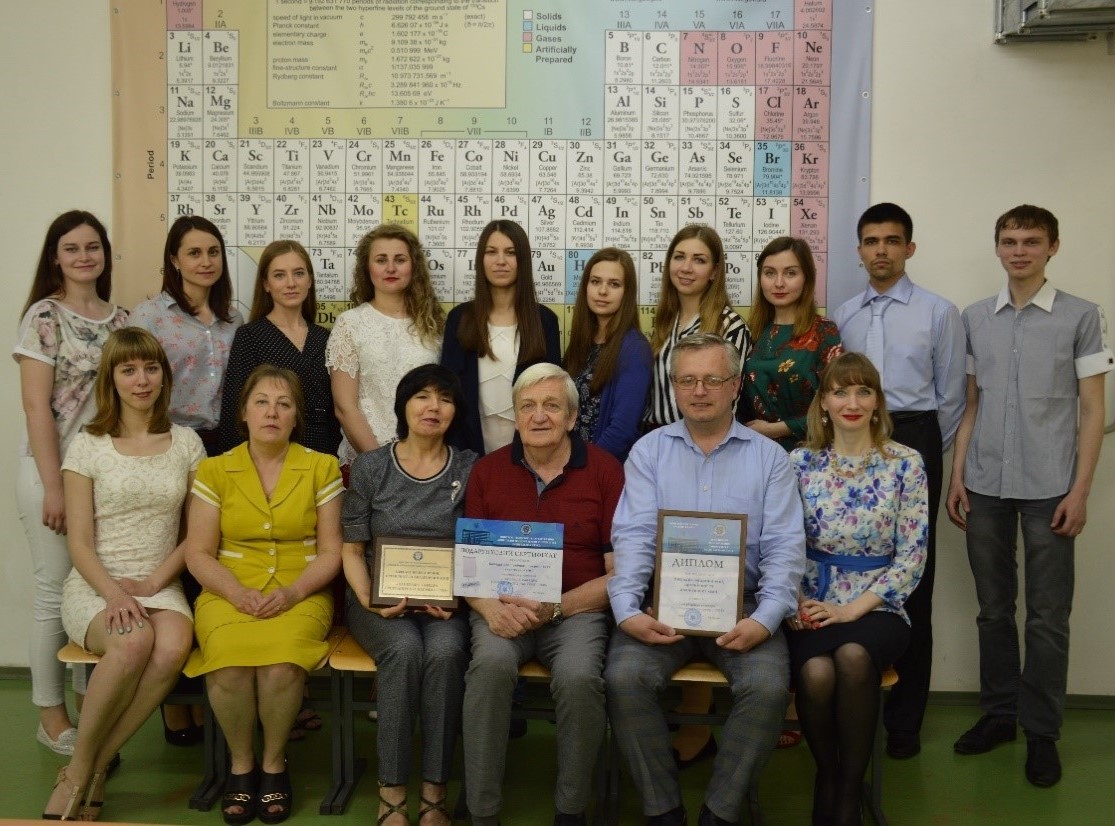
Staff of the Department of Inorganic, Organic and Analytical Chemistry (2019 year)
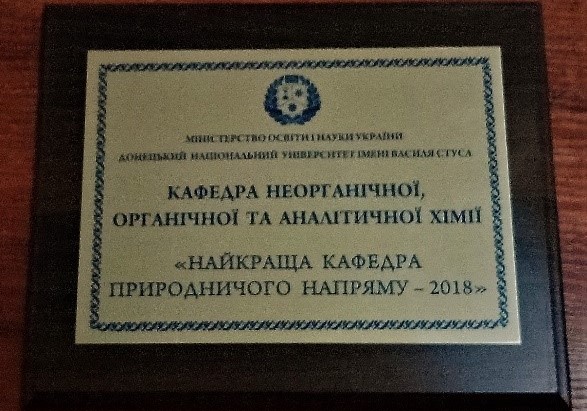
Department of Inorganic, Organic and Analytical Chemistry took first place in the ranking of Vasyl’ Stus Donetsk National University departments in 2018–2019.
The success of the department consists of the success of every teacher, staff member, graduate student of the department, every scientific and pedagogical group.
It is important that in the unification of the departments, each of them has preserved and actively develops its traditional lines of research during the years of its formation.
Department of Inorganic Chemistry
One of the areas that has functioned since the development of the Department of Inorganic Chemistry and the study of polyoxometalates, which have found their use in medicine as antiviral and antitumor drugs.

Hydroxyapatite is of great interest for researchers as an artificial bone substitute and a very perspective material for dentistry, orthopedics, bone and jaw surgery. However, the problem of synthesis of hydroxyapatite has not been resolved. At the request of the Central Institute of Dentistry (Moscow) a group led by Rozantsev G. M. created a unique metodic of the synthesis of bioactive hydroxyapatite, which in its characteristics was on the level , and in some even surpassed the foreign analogues of the United States, Japan and Italy, which were the world monopolists of this compound. Unlike those countries, where no more than 80 g of substance could be obtained in one synthesis, the proposed method had no restrictions on the weight of hydroxyapatite. To improve its quality, it can be modified with polyoxometalates or substitution of phosphorus by other p- and d-elements.

Today, the department operates the School of Chemistry of Polyoxometalates and Complex Oxides with two substantially new areas:
- Polyoxometalates in solid phase and solutions (head Rozantsev G.)
- Isomorphous substitutions in apatite systems (head Prof. Get’man E.).
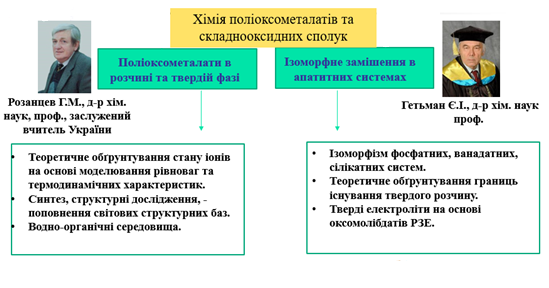
Studies at school were conducted in close connection with the implementation of scientific programs.
Research work:
- «Implantation materials based on hydroxylapatite and oxygen-containing compounds of elements V and VI groups» (State registration number 0195U015953),
- «Modern Intra-Bone Implantation Material Based on Modified Hydroxylapatite and Oxygen Compounds of d and f Elements» (№ 0198U005547),
- «Поліоксометалати рідкісних елементів для модифікування біоактивного гідроксилапатиту медичного призначення» (No. 0198U005547),
- «New compositions based on bioactive hydroxyapatite and polyoxometalates of certain medical d-elements» (No. 0104U002154).
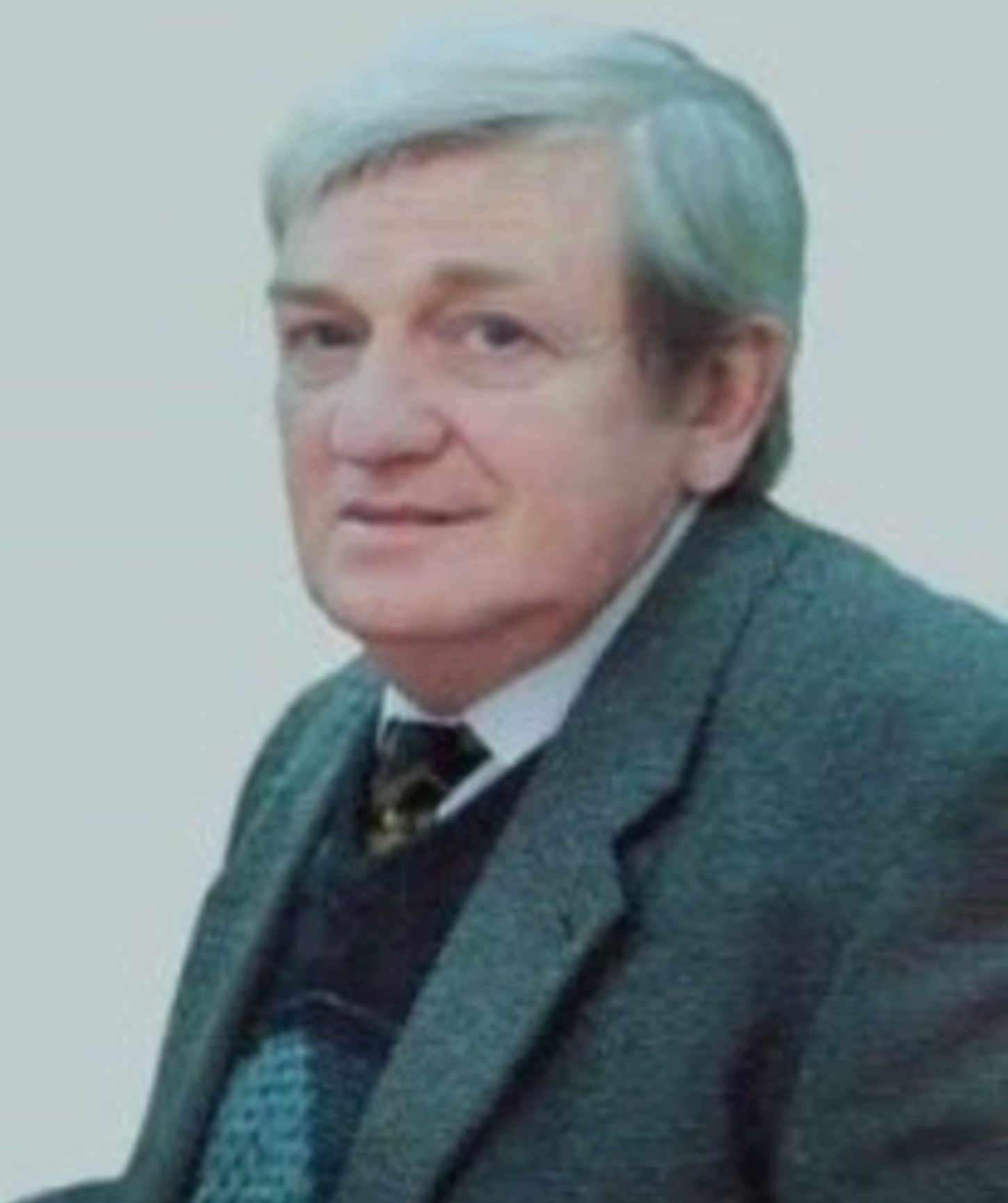
Georgiy ROZANTSEV
Project Manager
• «Bioactive calcium hydroxyapatite and d- and f-element polyoxymetalates for creation of medical materials» (No. 0107U001461),
• «Isopoly and heteropoly compounds of d- and f- elements and modified bioactive calcium hydroxyapatite for medicine» (No. 0110U003465).
• «Polyoxomolybdates and polyoxotungstates with single, double and triple charged metal cations for creation new materials» (in progress).

Serhii RADIO
responsible executor
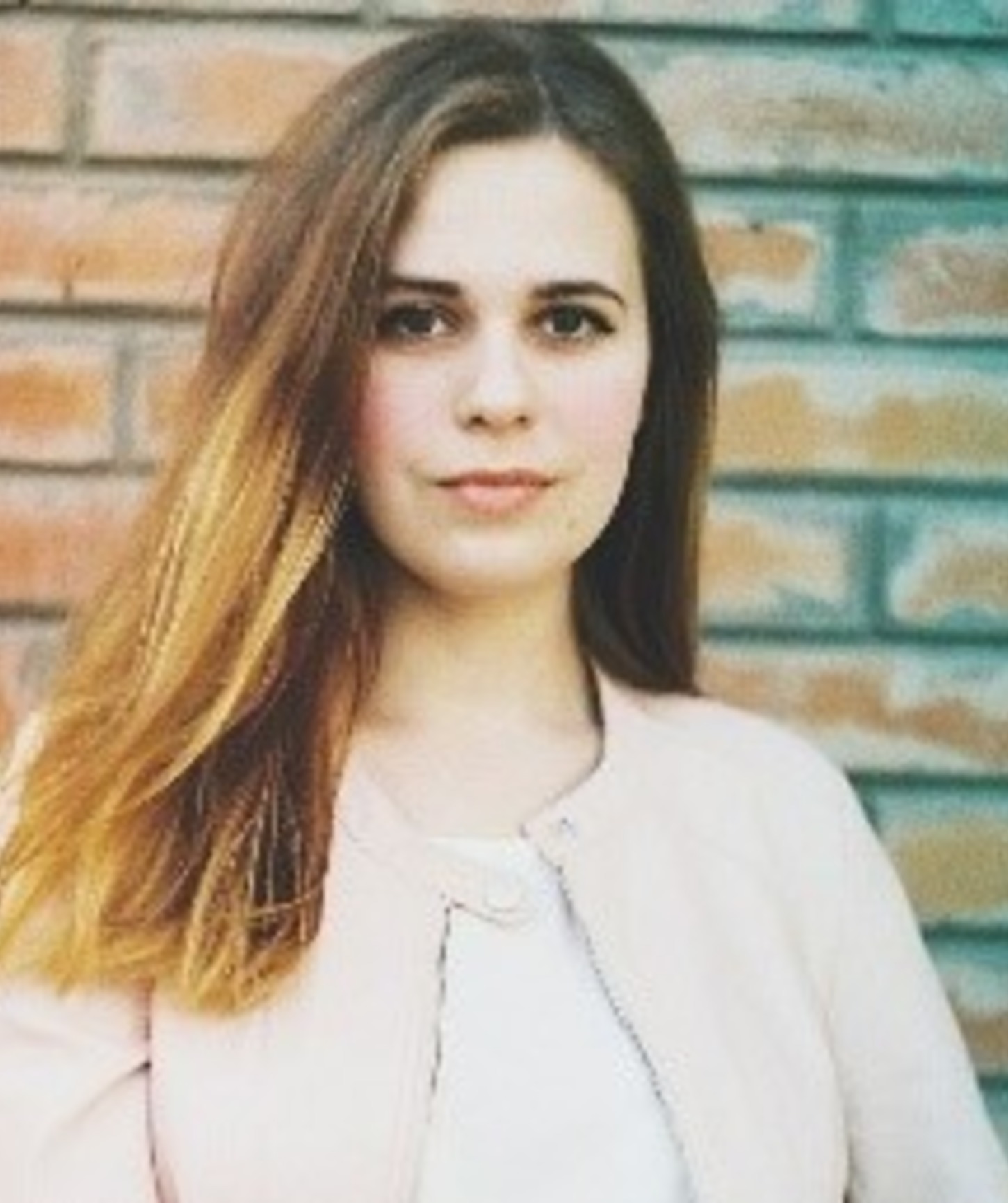
Ella DUVANOVA
It should be noted that since 2014 students have participated and won prizes in the competitions of the Ministry of Education and Science of Ukraine for natural science students.
Melnik Natalia (in 2015), Duvanova Ella (in 2016), and Oleksii Yuliia (in 2019 and 2020) in the MES of Ukraine competition for students of higher education.
In 2018, Ella Duvanova participated in the National Academy of Science of Ukraine competition for students of higher education.

Yuliia OLEKSII
The new school organically combined theoretical and applied aspects of the chemistry of polyoxometalates, which made it possible to propose a systematic approach to their study. Nowadays it is possible to determine the thermodynamic characteristics of complexation and to propose a new theoretically grounded scheme of mutual transitions between anions in solution, develop methods, synthesize, structurally characterize and study thermolysis of over 250 new compounds, which are substantially relevant, based on the simulation of the ion state in solution.
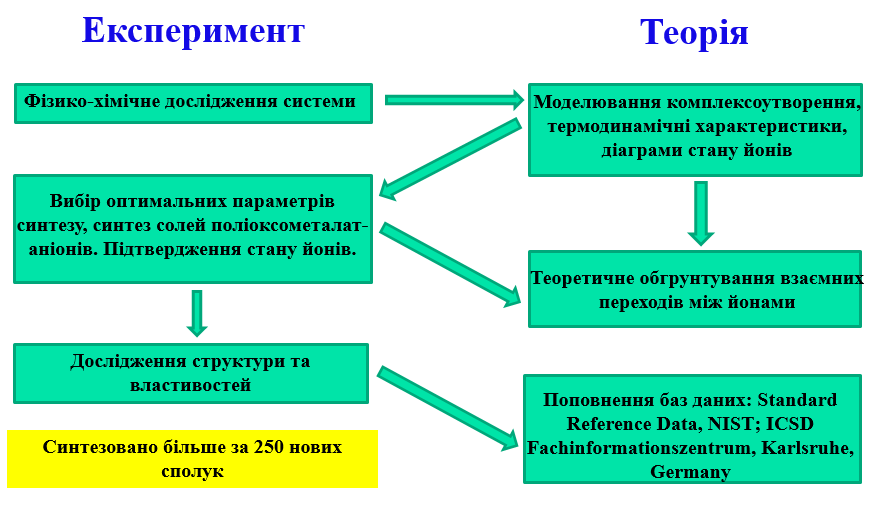
It would be impossible to carry out this work on an existing instrument base without active cooperation with other research centers not only in our country but also abroad in the countries of Europe (Austria, Belgium, Russia) and America (Canada, USA).
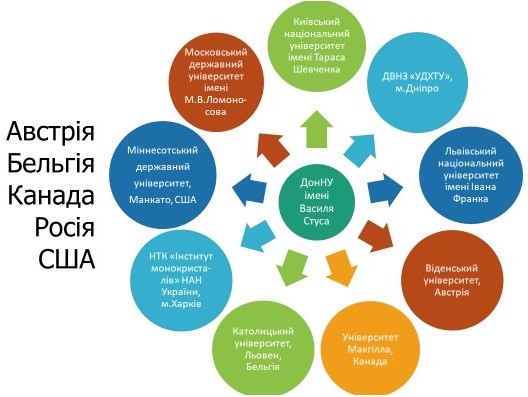
The research results are published in well-known foreign editions and in professional editions of Ukraine. I would like to draw your attention to the rather decent IMPACT factor of foreign journals, which indirectly testifies to the quality of the conducted research. Thus, about half of the material is published in journals with an IMPACT factor value is more than one.
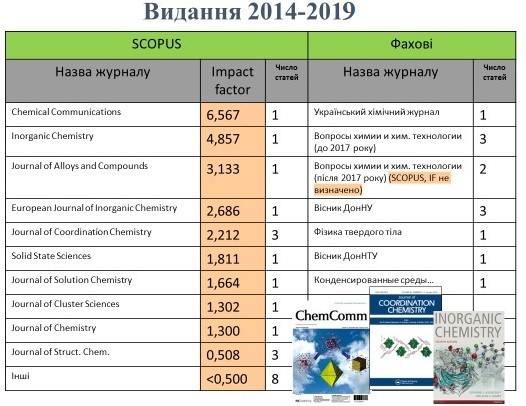
Generally, for the years period 2000-2018, there are 137 articles were published, 89 of which were in Scopus and 48 in professional editions, and 32 patents were obtained. For the period since 2014, 35 articles have been published, of which 25 are in Scopus and 10 are professional, and 2 patents have been obtained. Despite, the insufficient base of instruments, the intensity of the publication of research materials has not decreased.
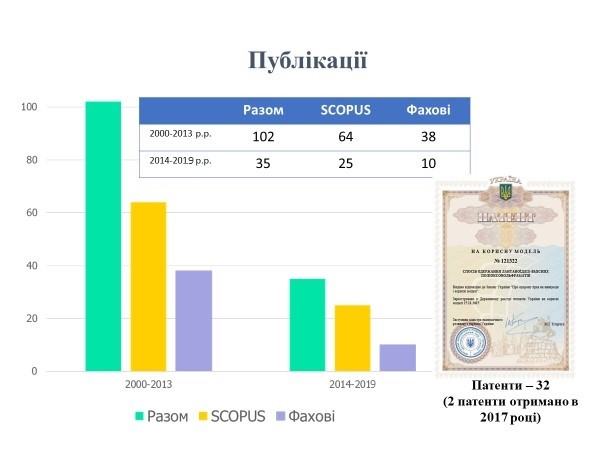
The Department of Inorganic Chemistry, that was created at the Faculty of Chemistry of Donetsk State University, has a very interesting history.
The Department of inorganic chemistry prepares specialists in the specialty “Chemistry” for the chemical, metallurgical, coal, pharmaceutical and food industries; radio electronics, chemical ecology and household chemicals; research institutes and research associations, research institutes and small enterprises; teachers of high schools, colleges, lyceums, colleges and general schools.
It is specialized in the preparation of students in 2 specialties: inorganic and computer chemistry. There is a Scientific-research group of Donetsk National University at the department.
During studing students acquire deep knowledge in the field of inorganic, bioorganic and organometallic compounds’ synthesis, master modern methods of research; study the mechanisms of solid-phase reactions and reactions occurring in aqueous media; study the properties of inorganic compounds, biogenic elements and their applications; acquire skills in developing chemical reaction modeling processes.
Computer and methodological support of the department makes the opportunity to train and control knowledge of the developed programs used in the study of inorganic chemistry, crystal chemistry, solid state chemistry. Software packages for calculating constants of complex formation processes, and for studing of reactions occurring in solutions and solid phase, form the students’ ability of the department to process the experimental data obtained in computer research.
Six Ukrainian scientific and methodological conferences “Computer Programs for Educational Purpose in Chemistry” were held at the department.
The staff of the department created computer tipes of crystal chemistry and chemistry for the 8th grade of high school textbooks, and programs for studying and control of knowledge of certain sections of inorganic chemistry, crystal chemistry, special courses. Published 2 computer science textbooks for general and inorganic chemistry for chemical and non-chemical students. Programs have been created, tested not only at DonNU, but also transmitted for use in educational establishments of different Ukraine regions, including the leading universities – Uzhgorod, Lviv, Kyiv, Dnipro, Kharkiv and others.
“Teaching Methods in Chemistry” is one of the general courses of the department, the studing of this cours allows the graduates of the Faculty to receive highly qualified training in methodological methods of teaching chemistry and chemical ecology in secondary schools. Graduates of the department work as teachers in schools, lyceums, colleges, technical colleges and universities. Many of them have defended their PhD theses and are working on their doctoral ones.
History of department’s development
The department of inorganic chemistry is the first department in the faculty. Ph.D., associate professor Marks Mokhosoiev (later became a corresponding member of the USSR Academy of Sciences) contributed to the creation of the department, who was the first dean (1965-1967, 1970–1972) and head of the department (1965–1972).
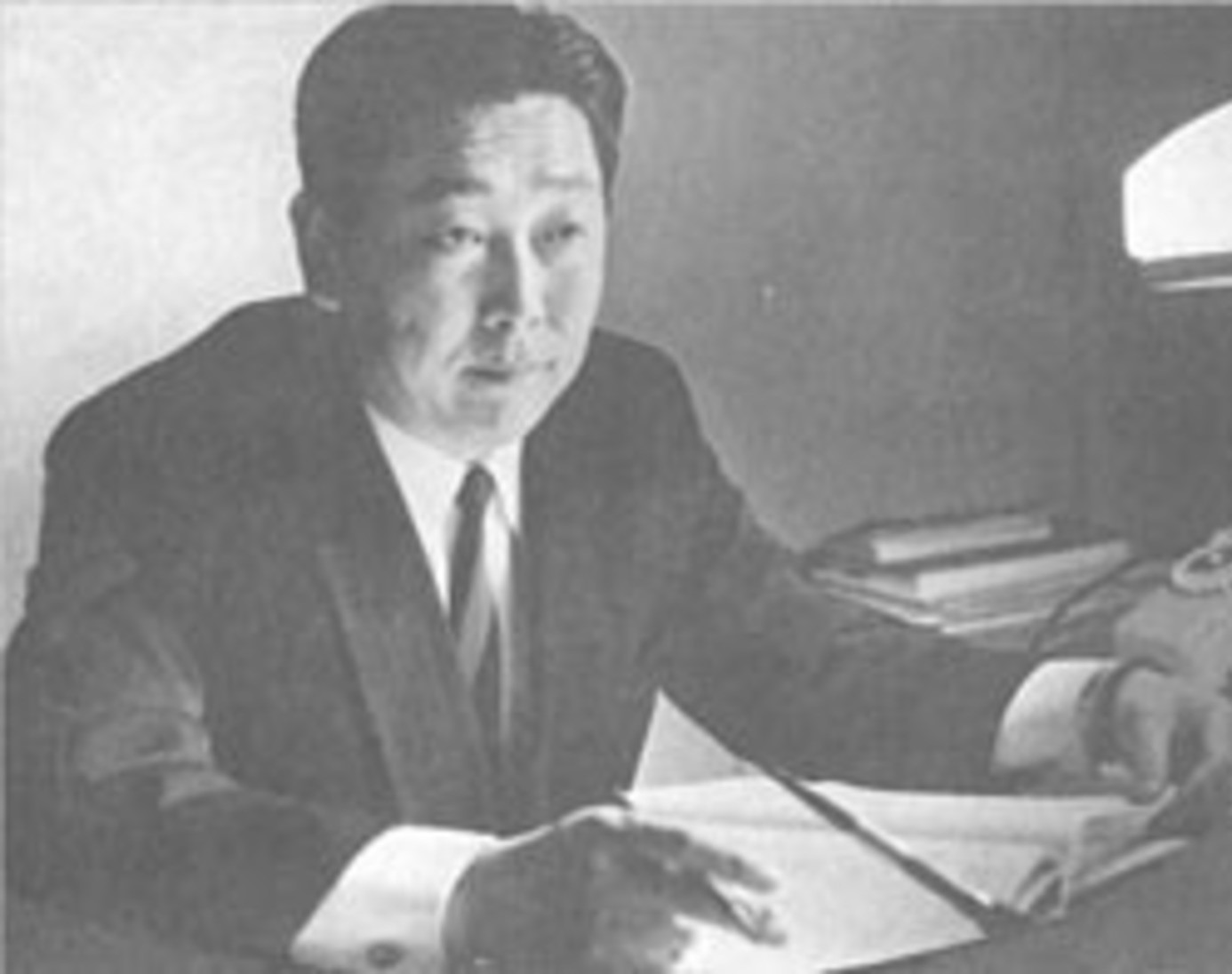
The history of the department began in June 1965, when M. Mokhosoiev crossed the threshold of the future Faculty of Chemistry. In a very short time (July-August) the foundation of the department from former employees of the IREA laboratory (later the Institute of Reactive Electron) and scientists from Lviv, Kharkiv, Dnipropetrovsk, who were invited to work at the university, was laid. As a talented organizer, M. Mokhosoiev united bold and determined youth, who enthusiastically overcame the difficulties of the process of organizing the faculty. Since September 1, 1965 the department began the educational process and scientific activity.
The first employees of the department were: M. Mokhosoiev – Assistant Professor, Head of the Department and Dean of the Faculty of Chemistry, Professor L. Lytvynenko – Rector of the University, A. Kyrychenko, R. Rodchenko – senior lecturers; A. Hruba, L. Dehtiarenko, M. Zayets, V. Pitsiuha, V. Stetsik, L. Kliuievskyi – assistants; R. Lohvynenko – Head of the laboratory; M. Baranova, L. Hryshchenko, S. Kabaliuk – laboratory assistants.

Teaching staff of the department in 1970: N. Zhyhulina, V. Safronova, V. Tumasian, R. Reunova (Chupryna), O. Rybina. After the elections to the Academy of Sciences of the USSR in the Donetsk Department, the professors of the department worked in 1965–1966 Cor. of USSR Academy of Sciences S. Baranov and R. Kucher. At the department in September 1965 a research group (E. Get’man, T. Holopiorov, O. Dobrohorska) was established, and in December 1965 a postgraduate study (Y. Hetman and L. Kliuyevskyi). In 1966, the departments of analytical and organic chemistry emerged.
The Department was developing at a fast pace. Unique equipment of the time was purchased: derivatograph, diffractometers, FTIR and KP spectrometers. Collaboration with the institutes of the USSR Academy of Sciences of the USSR Academy of Sciences, the Moscow Institute of Fine Chemical Technology named after M. Lomonosov, Kyiv and Kabardino-Balkar state universities. Employees participated in all the profile conferences and meetings.

During this period of development of courses of lectures of basic disciplines and special courses at once great attention was paid to educational and methodical work, which was reflected in the manuals which were published: “Thermodynamics and Kinetics of Generation Systems” (Y. Potashnikov), “Physico-chemical bases of synthesis inorganic compounds “(M. Mokhosoiev, V. Kryvobok, T. Hotmanova),”
Lecture course for biophysicists “(A. Hruba),” Testing works for biophysicists “(M. Zayets) . Mokhosoiev created a new direction in chemistry of rare elements – studying the patterns of synthesis and properties of molybdates, tungstates, vanadates used to create new single crystals, as well as materials for microelectronics.
Basic experiments were carried out along with economic and contractual topics in accordance with the coordination plans of the USSR Academy of Sciences and the State Committee for Science and Technology. During the five-year period, the research group has expanded: R. Lohvynenko, T. Golopiorova (Loboda), L. Hryshchenko, R. Siednieva, S. Loboda, V. Marchenko, V. Kolotiuk, T. Uhnivenko, V. Pienkova, O. Makharov (Mykhalchuk), L. Honcharova, A. Osovska, V. Yermak, I. Kononenko.
According to the results of scientific work, the first five years of the department’s existence were productive – four candidate’s theses were defended: E. Get’man, V. Kryvobok, A. Hruba, M. Zayets. In 1970 M. Mokhosoiev defended his doctoral dissertation, and in 1971 received the title of professor of the department of inorganic chemistry.
The students of M. Mokhosoiev had the opportunity to communicate with scientists: academician V. Spitsyn, corresponding member of the Academy of Sciences of the Ukrainian SSR I. Matiash, Doctor of Chemical Sciences O. Holub, I. Hlukhov, V. Chuvaiev, P. Fedorov, V. Zelentsov, O. Tsyhanok, B. Zaytsev and others. M. Mokhosoiev was one of the organizers and a regular participant of the All-Union meetings on molybdenum and tungsten chemistry and technology.
Kryvobok headed the department from 1972 to 1982. Works at the department since 1966 as a senior lecturer, since 1970 – assistant professor. The main scientific area is the synthesis and study of the properties of inorganic materials. Since the beginning of the 80s, under her direction, work has been carried out to order a military-industrial complex for the development of powders and pastes to create resistive film materials. She is one of the first teachers to have completed her postgraduate studies and defended her PhD thesis on tungsten alkaline earth metals.
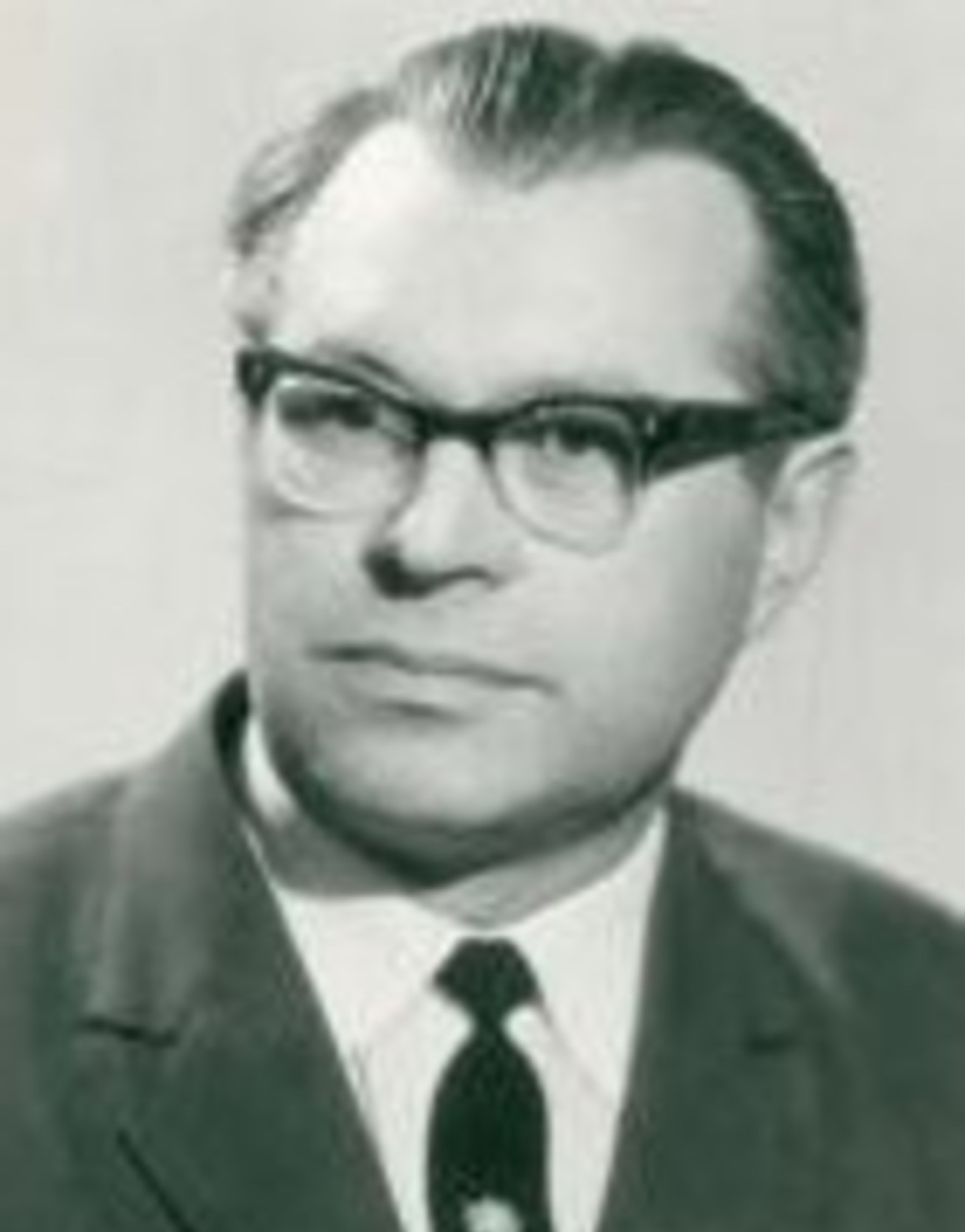
Hruba (years of department management: 1982–1987) since 1965 – assistant, since 1971 – assistant professor. Direction – synthesis and study of the properties of tungstates of aluminum, gallium, indium, thallium, as well as heteropolyungstates of some rare earth elements. During his years in charge of the department, he was the head of a contractual subject on the development of glass for resistive pastes. He paid a lot of attention to the management of scientific works within the framework of students’ research work. Under his leadership, a large number of diploma works were completed, one PhD thesis was defended.
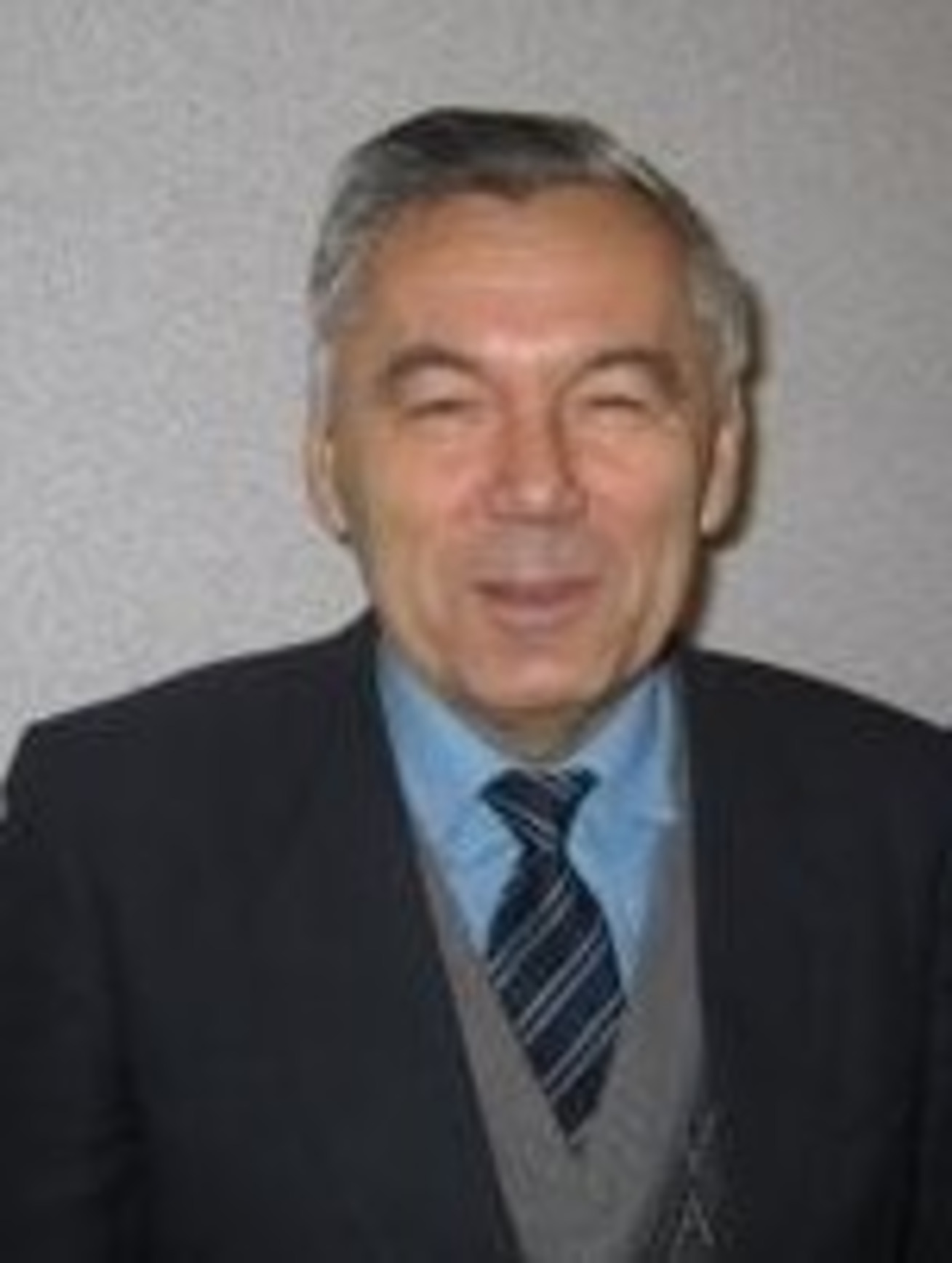
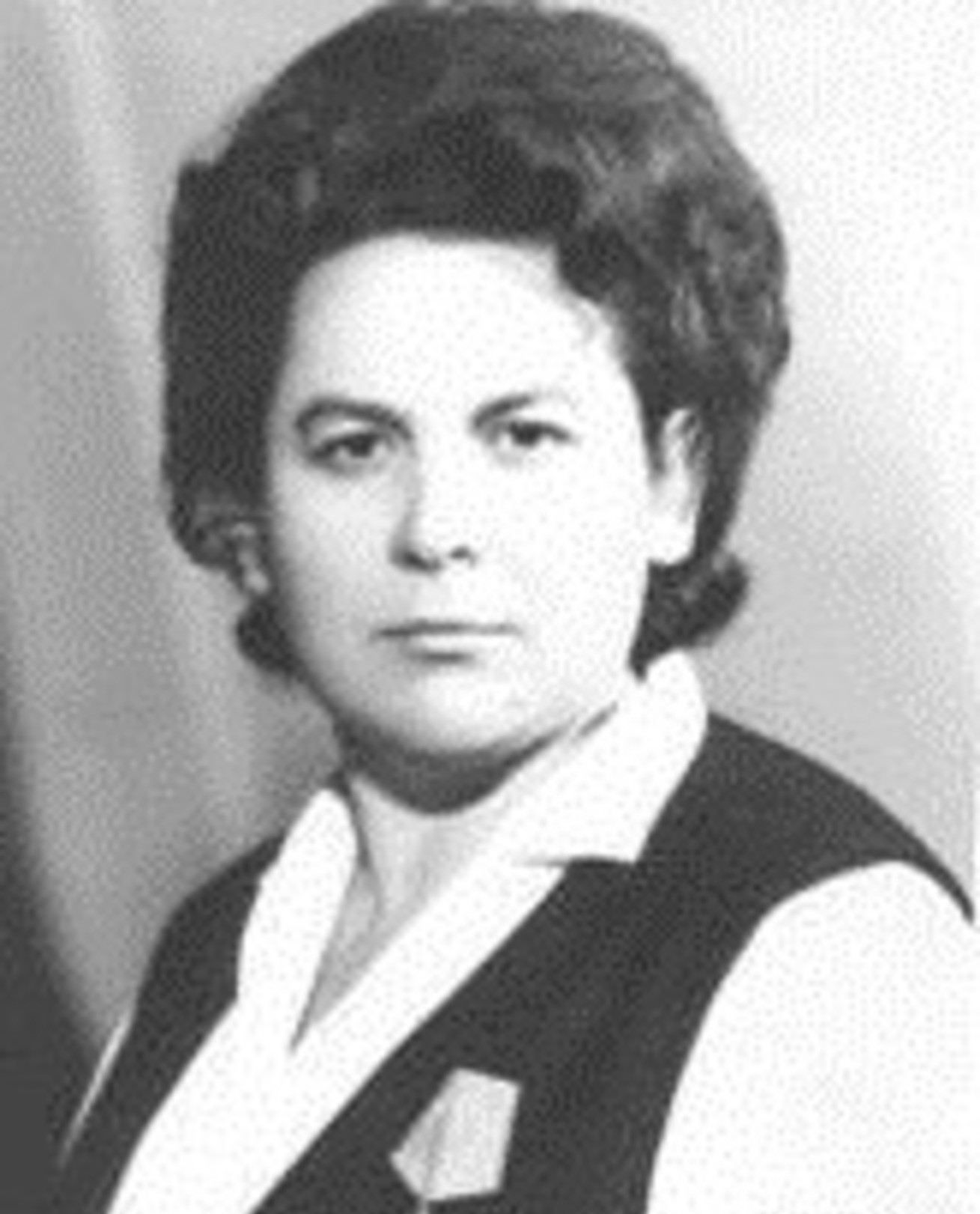
Koshcheiev headed the department in 1978–1979. Graduated from Tomsk Polytechnic Institute, postgraduate course at MSU. For at least 10 years he worked as an assistant professor in the department of inorganic chemistry. Scientific direction: synthesis and properties of uranates, molybdates, phosphates of alkaline earth elements. He led the creation together with M. Mokhosoiev in a direction related to solid-phase synthesis of oxometalates and isomorphic substitution. He created an X-ray laboratory at the department, assisted by colleagues from Moscow State University named after M. Lomonosov.
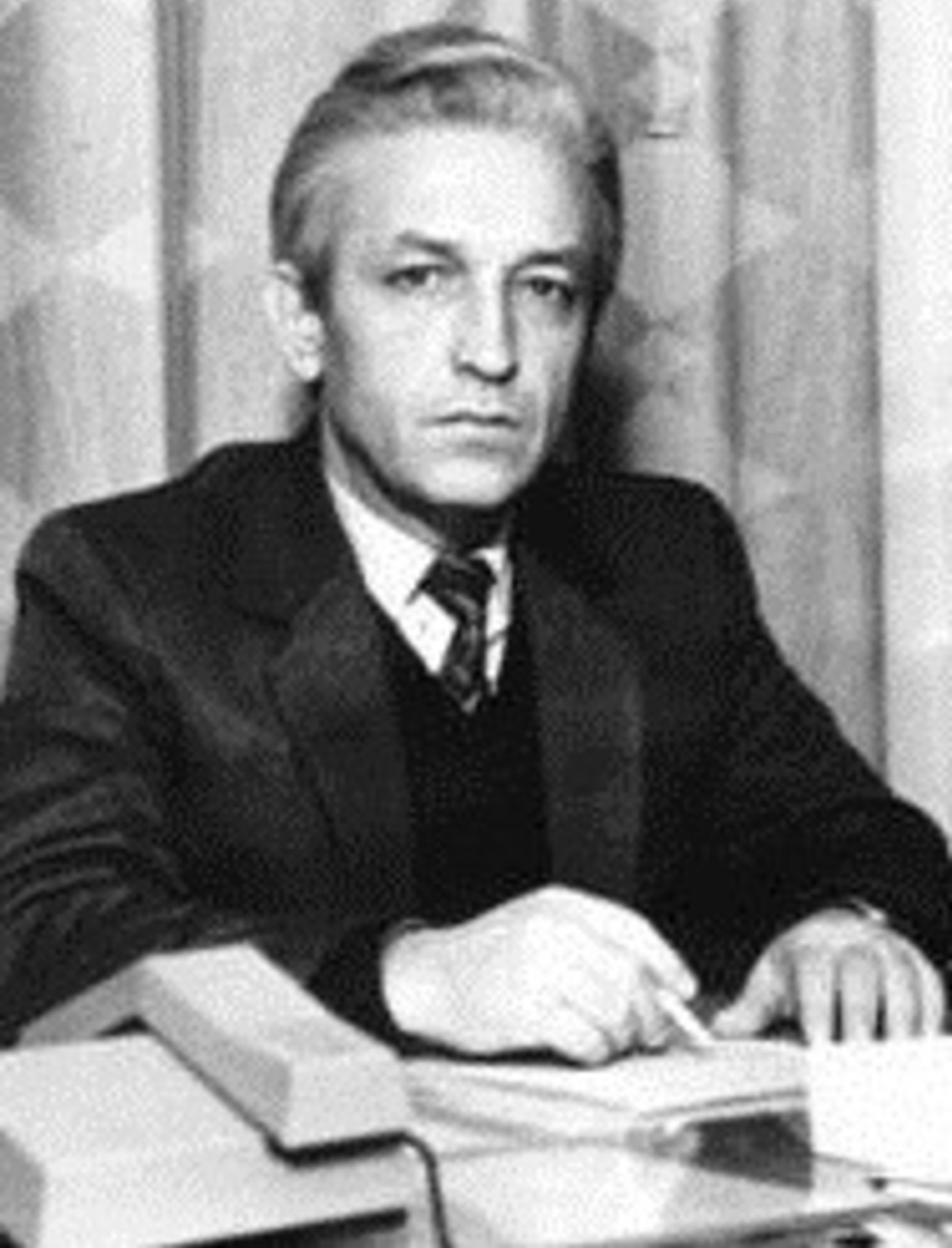
Hetman Y. – Head of the Department from 1988 to 2011. He came to the department in 1965 for the post of senior master of the research group, after six months he enters graduate school, since 1970 – Assistant Professor, since 1988 – Professor of the department. Y. Hetman created his own school, the main scientific area of which is the study of isomorphic substitutions in inorganic materials. In 1987 he defended his doctoral thesis on “Isomorphic substitutions of tetrahedral oxoanions of elements of group VI”. Since the mid–1990s, he has been conducting systematic studies of heterovalent substitutions in compounds with apatite structure. In recent years, he has also been working on a new direction – the development of computer technology in chemistry teaching.
Science
The research work of the Department of Inorganic Chemistry is devoted to the production and research of new compounds, and to the development of materials based on known compounds by improving traditional and developing new methods of synthesis. The object of the study is oxygen compounds of elements of I-VI groups of the D. Mendelieiev periodic system, including rare earth and transition metals.
The search for ways of synthesis of new inorganic materials is carried out using a complex of physicochemical methods of research: potentiometry, conductometry, thermogravimetry, X-ray phase analysis, X-ray structural analysis (Rietveld method), infrared spectroscopy, differential-thermal resonance analysis, electron resonance magnetron, reflection.

One of the scientific directions is the study of isomorphism phenomena. Interest in these works is based on the fact that many materials of modern technology – semiconductors, ferro-, piezo, pyroelectrics, ferrites, phosphors, etc. in most cases are created by introducing into the main component isomorphic impurities of a given composition and quantity.
This allows us not only to adjust their properties to some extent, but also to obtain materials with higher parameters than the original components. Investigations of isomorphic substitutions in tungsten and molybdate systems at the Department of Inorganic Chemistry of DonNU began in the late 1960s and early 1970s.
Experimental studies of substitutions were carried out both in systems with common cations (alkaline, alkaline earth, rare earth elements) and various tetrahedral anions (chromate, sulfate, molybdate, tungstate) – S. Loboda, T. Hryshchenkova, P. Zvoleiko, V. Butukhanov, V. Mykhalchuk, and in systems with common complex anions and different cations (Al, In, BI, Cr, Mn, Fe, Co, Ni) – V. Marchenko.
The analysis of the experimental data obtained revealed the patterns of isomorphic substitutions in molybdate and tungsten systems. The results of the experimental studies were used to develop the quantitative theory of isomorphic substitutions, which developed methods for calculating the interatomic distances and the degree of ionicity of the cation-tetrahedral anion, as well as the method of predicting the boundaries of substitutions in a wide temperature interval using experimental data.
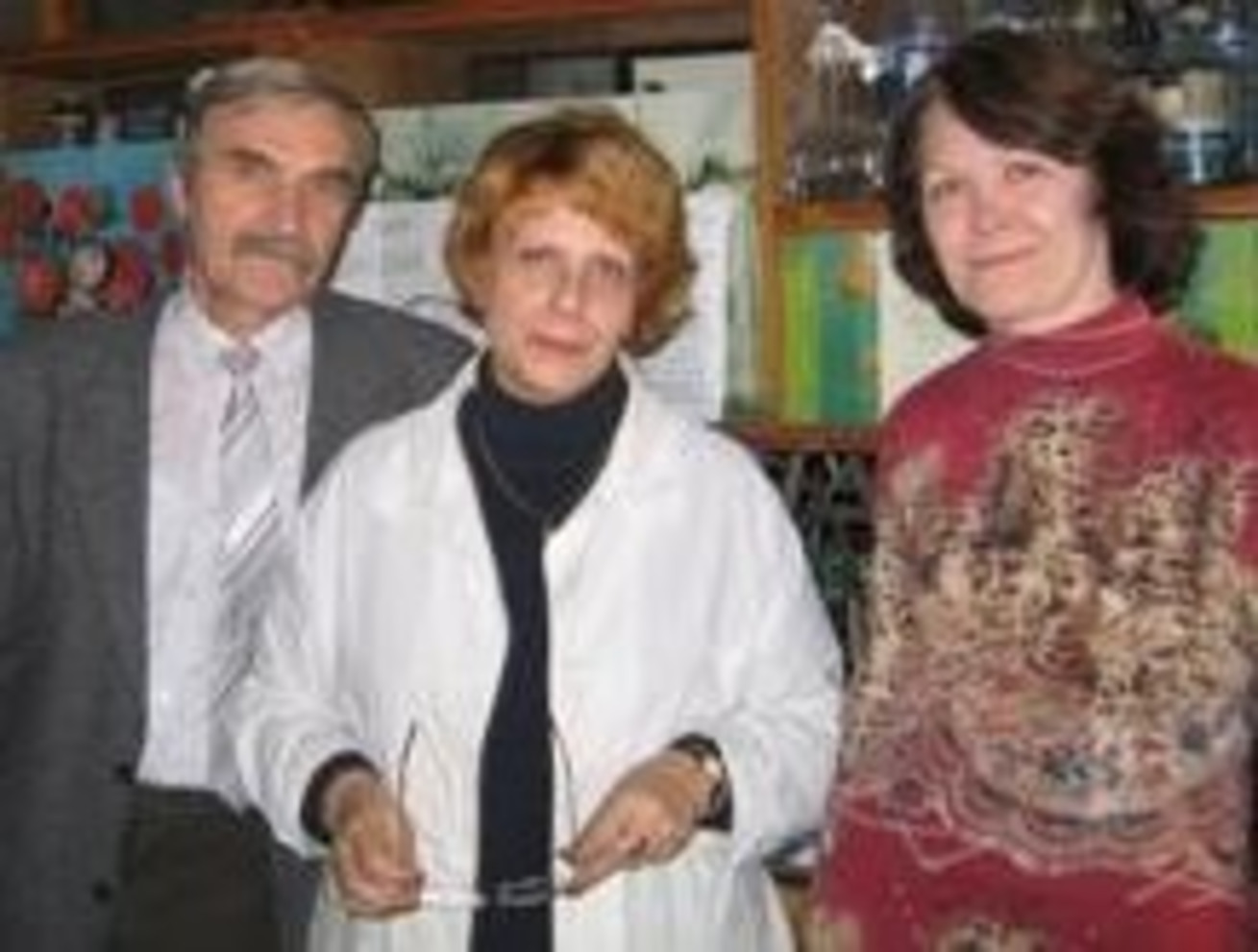
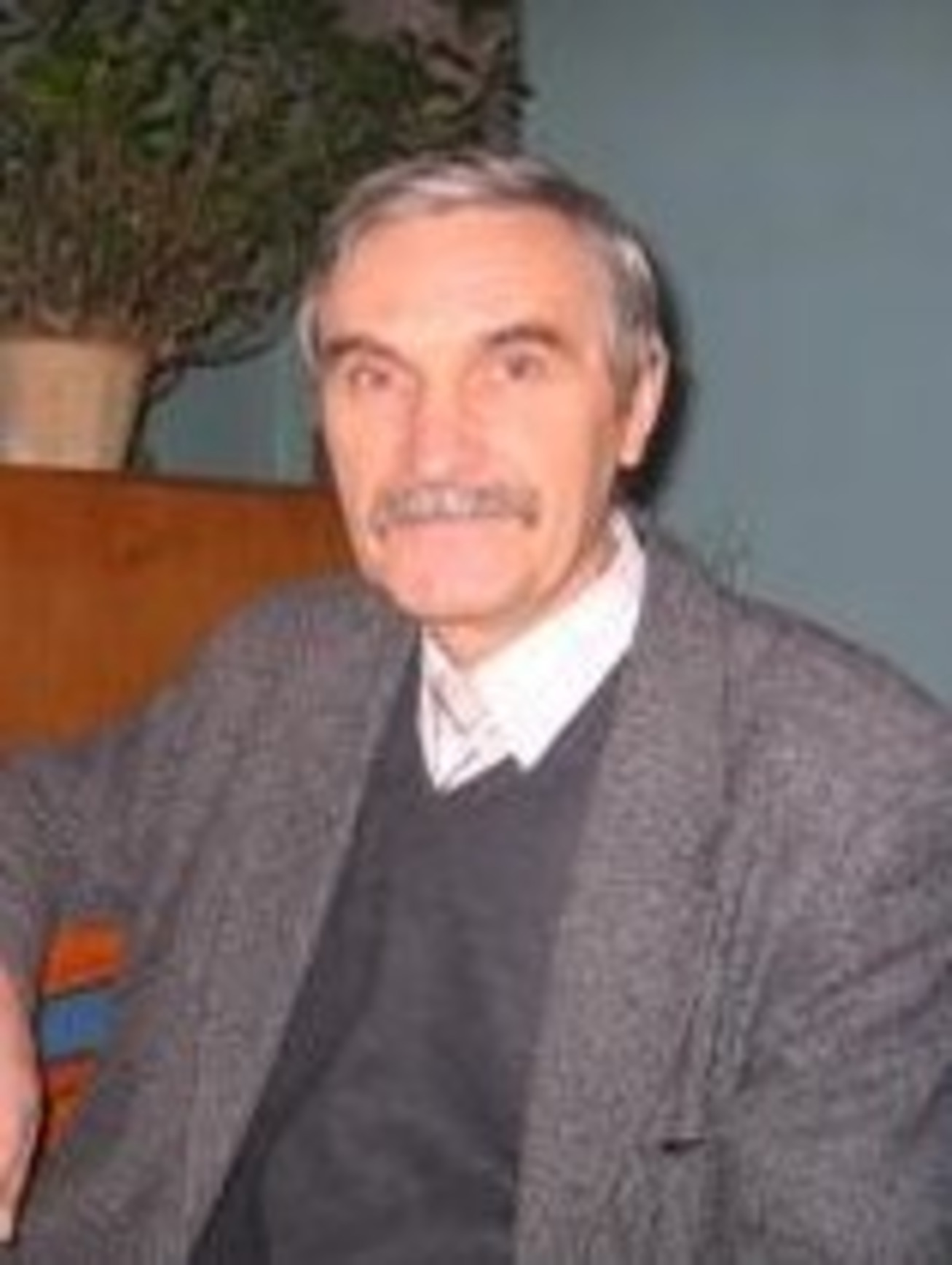
In the same years on the order of various enterprises under the direction of E. Get’man investigated anode, piezo, and pyroelectric materials, resulting in the study of isomorphic substitution of M4+ → M4+ (M4+ – Ti, Sn, Ru), 2M4+ → M3+ + M5+ (M4+ – Ti, Sn; M3+ – Al, Ga, In, Cr, Fe; M5+ – Sb, Nb, V) – V. Marchenko, Alragig Masood; Li + + Ta5+ → Sr2+ (Ba2+) + Ti4+ (Zr4+, Hf4+) – T. Tkachenko, Hamis Salem; and substitution in lead zirconate-titanate (S. Loboda, L. Pasichnyk, etc.).
In the mid-1990s, the department began systematic studies of heterovalent substitutions in compounds with apatite structure. The interest in these compounds was due to their practical use in medicine as bone replacement, as well as catalysts, adsorbents, sensors, phosphors, and the like.
As a result, not only data on solubility boundaries were obtained, but also their regularities were established and previously unknown features of heterovalent substitutions were revealed. Currently, an electronic database of isomorphic substitutions is being created based on research and on the basis of numerous literary data.

Another equally important scientific direction of the department is the synthesis of iso- and heteropoly compounds of d-elements of V-VI groups with rare earth metals and other cations (headed by Candidate of Chemical Sciences G. M. Rozantsev). These compounds are used:
- as catalysts in industrial organic synthesis;
- as fluorescent compositions;
- some iso- and heteropoly compounds exhibit antiviral and antitumor properties.
At the Department of Inorganic Chemistry of DonNU the research of these extremely interesting objects began to be conducted about 40 years ago under the guidance of M. Mokhosoiev and continues to this day, embodied in the works of his students: V. Kryvobok, A. Hruba , A. Nakhodnova, T. Hotmanova, V. Pitsiuha, and then in the work of his students: G. Rozantsev, K. Bilousova, L. Zaslavska, Y. Moroz.
The works carried out at the department until the mid-1970s and 1990s were preparative and synthetic in nature and were performed in three directions:
- tungstates (O. Riabukha, N. Shevtsova, Y. Moroz, L. Cherednichenko);
- molybdates (T. Hotmanova, V. Pitsiuha, S. Palitsyna);
- vanadates (L. Kovhan, L. Zaslavska, I. Listratenko).
As a result, synthesis methods were developed from aqueous solutions of salts containing cations of most s, p, and d-elements, and the techniques were copyrighted.
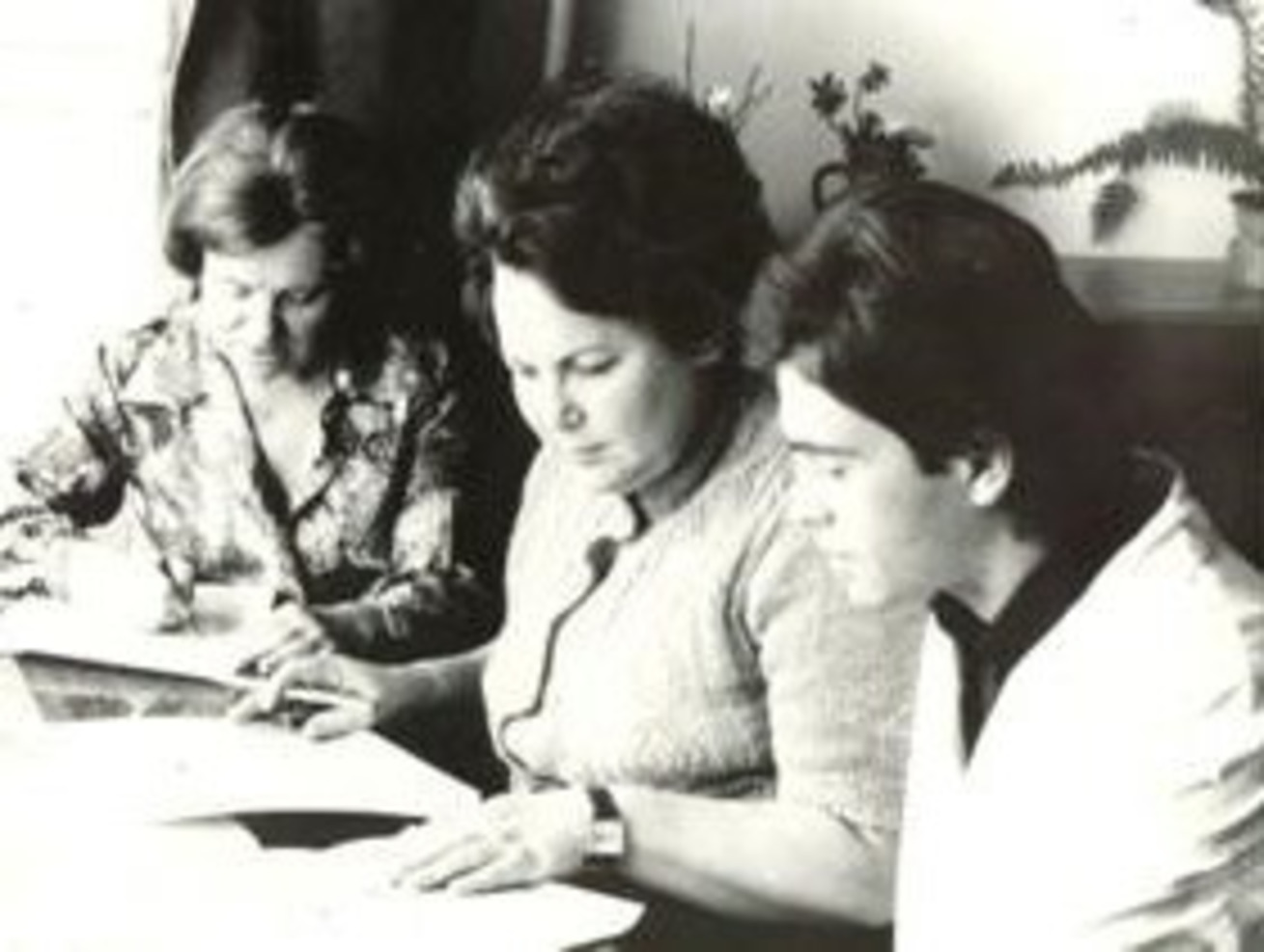
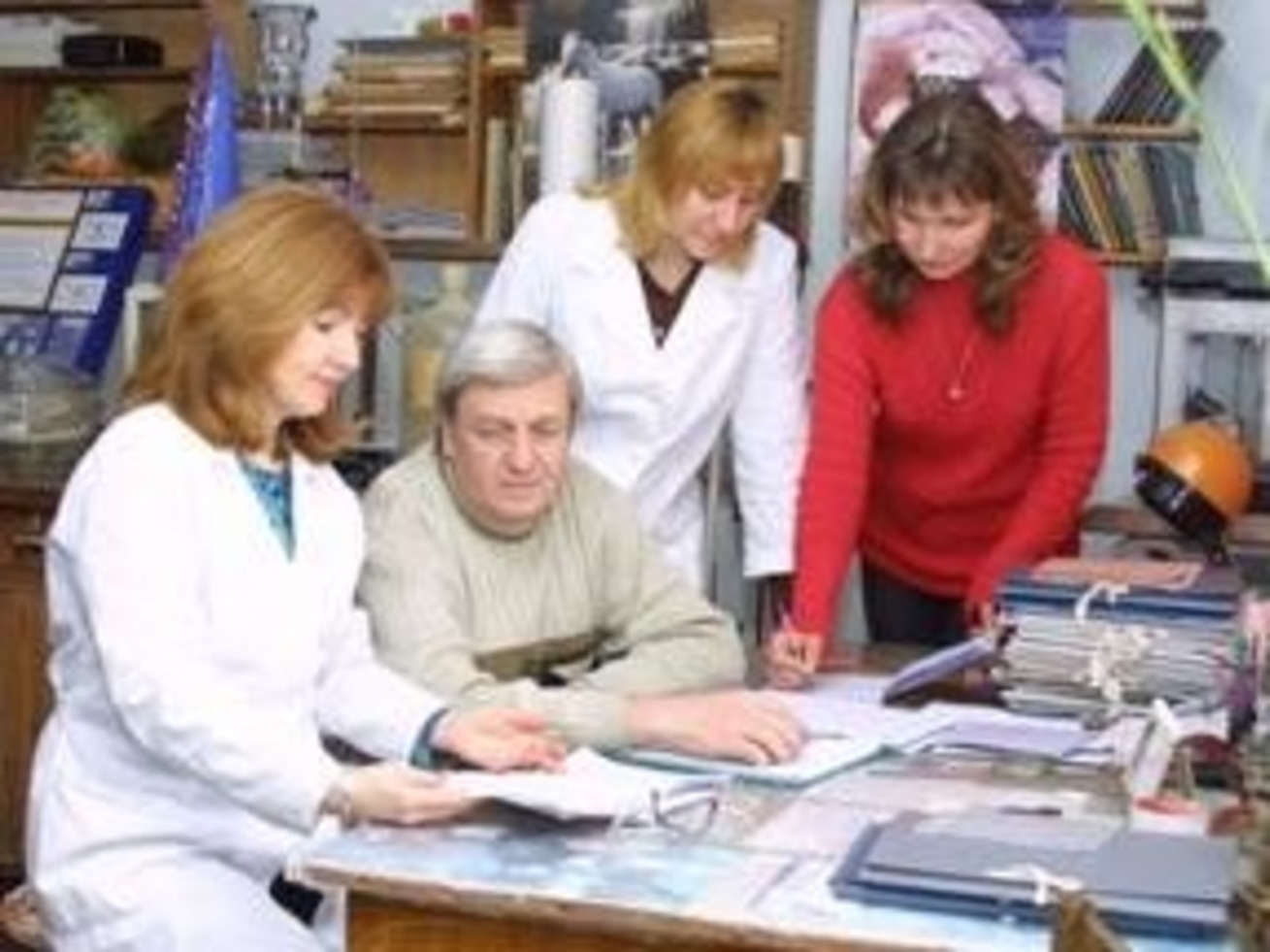
Since the mid-1980s, the study of the synthesis of iso- and heteropoly compounds has shifted to a slightly different plane. The fact is that the objects of research were complicated:
- from simple para- and meta- to more complex decavulframates (H. Rozantsev, K. Bilousova);
- from vanadates of stable cations to vanadates of cations of the scandium subgroup (L. Zaslavska);
- from heteropoly compounds of the 12th row to compounds with Keggin structure (Y. Moroz);
- from block heteropolianions to retaining semi-open lacunar derivatives (T. Bannikova, H. Rozantsev, V. Kryvobok).
The department is working on equilibrium modeling, which requires solving some of the most complex mathematical problems using modern computer programs.
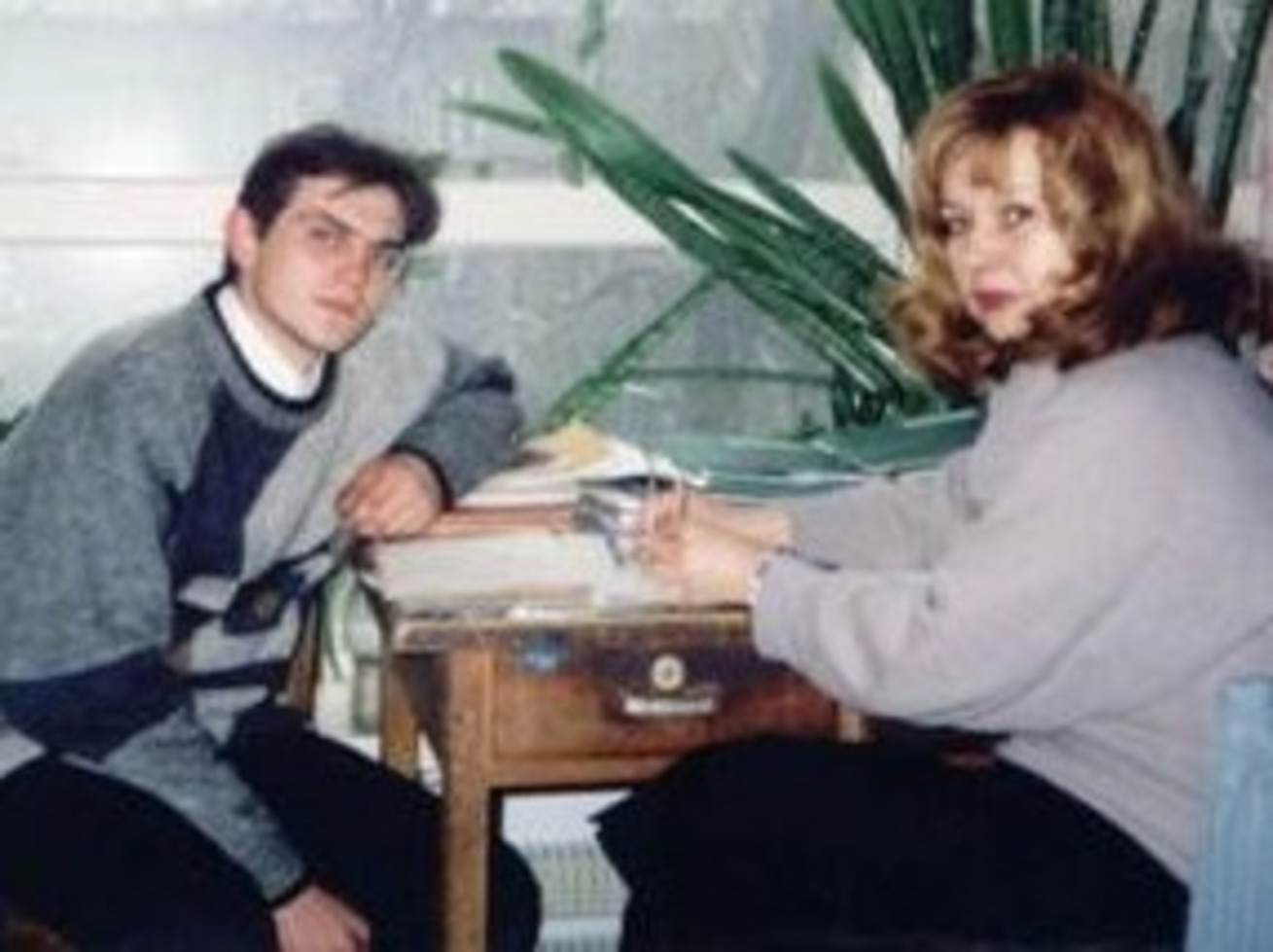
In the present century, under the guidance of Rozantsev H., the methods of synthesis of new inorganic materials based on various apatites (calcium, strontium, etc.) from aqueous solutions and solid-phase method (T. Bannikova, L. Zaslavska), K. Bilousova).
Our department has developed a method of obtaining bioactive cement based on apatite (HA), which can be used as implant material in orthopedics, surgery and dentistry. Unlike the known methods which allow to receive up to 80 g of material for one synthesis, the technique developed by us allows to obtain 1 kg of GA for one synthesis.
Its main characteristics are not inferior to their foreign counterparts, and in some respects even exceed. This material meets US standards. Clinical testing of implants based on HA has shown that various types of powders produced by the Department can be used for intraosseous implantation.
Since 1978 the corresponding member of NAS of Ukraine V. Klimov has been merged into the department staff and its scientific direction.
Klimov, Professor of the Department of Inorganic Chemistry, Doctor of Chemical Sciences, Corresponding Member of the NAS of Ukraine, Laureate of State Prizes of the USSR (author of 450 works, 115 inventions) works in the field of Technology of New Inorganic Materials. Professor V. Klimov made a great contribution to the development of technological processes for the production of ferrite, ferro- and piezoelectric and condenser materials.


In addition to the development of traditional, so-called ceramic technology, he is one of the authors of the development of new methods of obtaining ceramic materials: the method of joint deposition of components, spray drying solutions, and others.
At this stage, the department maintained contact with the great scientists in the field of crystal chemistry, the chemistry of coordination compounds in solutions and nanomaterials. These are academicians of the NAS of Ukraine V. Skopenko, M. Slobodianyk, S. Volkov, academicians of the Russian Academy of Sciences V. Urusov and V. Lunin, professors V. Yatsymirskyi, C. Pruitt, M. Poup and Y. Kholin.
During the years of existence of the department, according to the results of scientific research, more than 800 works were published, 73 author’s certificates and patents were obtained, 5 doctoral theses were defended, 43 candidates were awarded and more than 80 textbooks were published. The graduates of the department are V. Lutsyk, V. Butukhanov, I. Kuselman, O. Shubin, V. Mykhalchuk, H. Rozantsev.
Department of Organic Chemistry
The Scientific-Pedagogical Group on Organic Chemistry has existed at Vasyl’ Stus Donetsk National University since the foundation of the Department of Organic Chemistry of the Faculty of Chemistry (1965–2018).
Scientific-pedagogical group on organic chemistry provides teaching of general courses: “Organic chemistry”, “Physical methods of research of substances”, “Fundamentals of chemical technology”, “Labor protection in the chemical field”, “History of experimental and theoretical chemistry”, “Fundamentals of stereochemistry” , “Methods of teaching in high school” and special courses on methods of synthesis of organic substances, study of their reactivity, methods of modeling chemical processes.
The research work of the group is aimed at investigating the reactivity and reaction mechanisms of oxirane compounds, the relationship between the structure of oxiranes, nucleophilic reagents, catalysts and properties of epoxy compounds for the creation of advanced materials by modeling and experimental chemistry, as well as training courses.
The main scientific directions of work are:
- Mechanisms of nucleophilic substitution reactions in saturated and unsaturated carbon atoms.
- Mechanism of the oxiran cycle opening reactions by proton-donor nucleophiles.
- Epoxy compounds: reactivity and promising materials based on them with specified properties.
- Innovative distance learning technologies, in particular through the MOODLE platform.
- Test as a measurement tool in modern learning technologies
- Creation of composite materials with specified properties based on epoxy resins for electronic engineering.
- Investigation of cross-correlation analysis in the kinetics of nucleophilic substitution reactions to establish mechanisms of organic reactions.
The scientific school of organic chemistry was created by the first rector of Donetsk University, academician L. Lytvynenko (reactivity of nucleophiles and mechanisms of reactions of nucleophilic substitution).
The history of the Department of Organic Chemistry begins in 1965. For many years the lecturers of the department were following scientists: Doctor of Chemical Sciences, prof. Oliinyk M., Candidate of Chemical Sciences, Associate Professor Kyrychenko A., Candidate of Chemical Sciences, Associate Professor Popova R., Candidate of Chemical Sciences, Associate Professor Artamonov A., Candidate of Chemical Sciences Serebriakov I. Doctor of Chemical Sciences, Professor Shpanko I., Doctor of Chemical Sciences, Professor Shved O. still work at the department. The department always had experienced heads of laboratories, senior laboratory assistants, laboratory assistants, researchers, and graduate students.
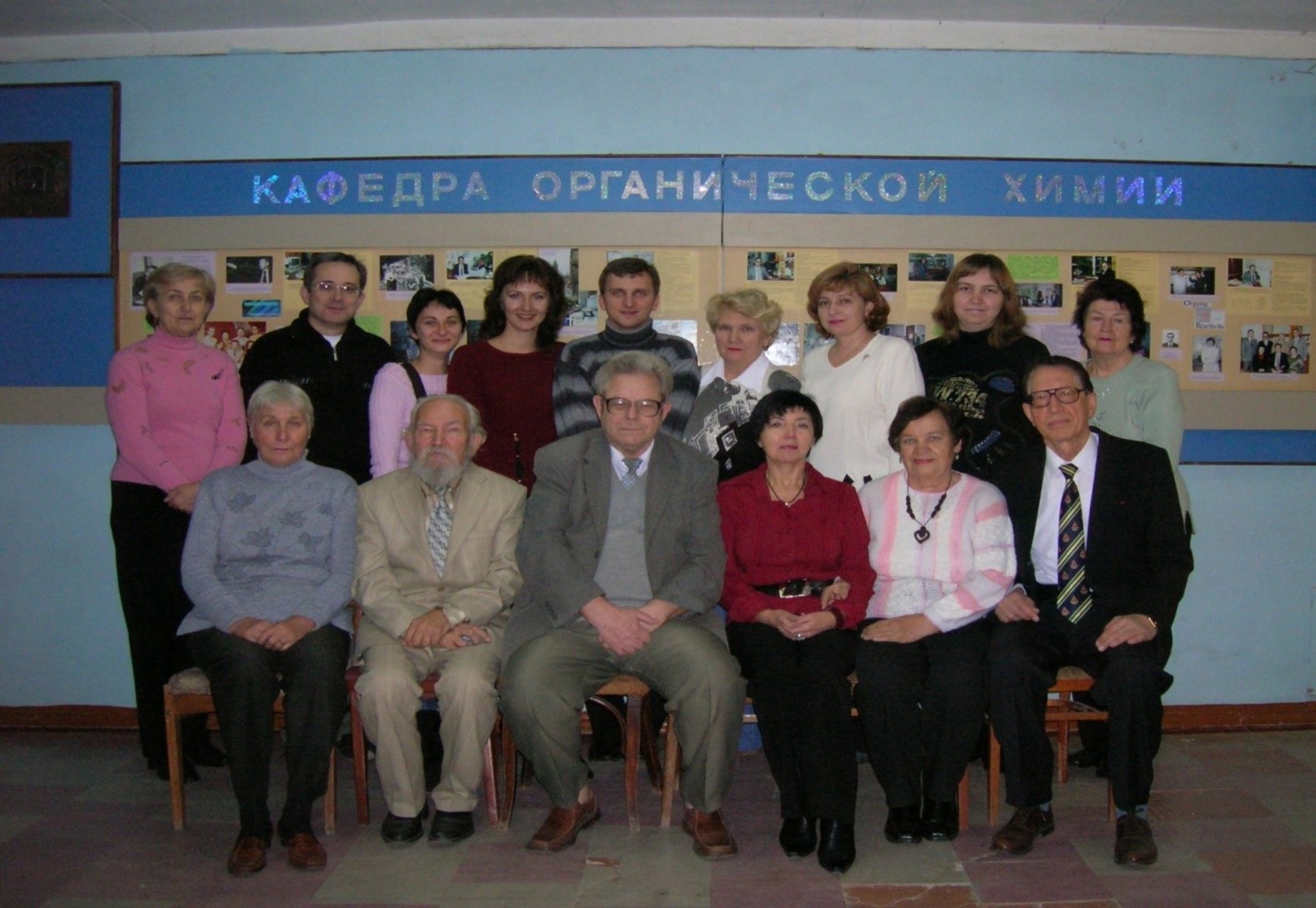
Department of Organic Chemistry 2008-2009 academic year
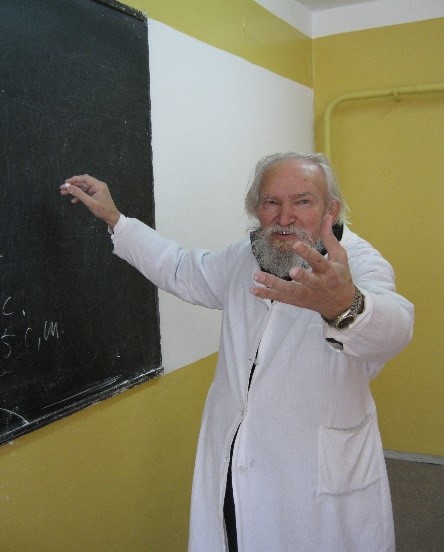
Head of the Department of Organic Chemistry, Dr. Chem. Sciences, Professor, Honored Professor of DonNU Mykola OLIYNYK (1975-2009)

From 2009 to 2014, the department was headed by Dr. Chem. Science Sergey BOGZA
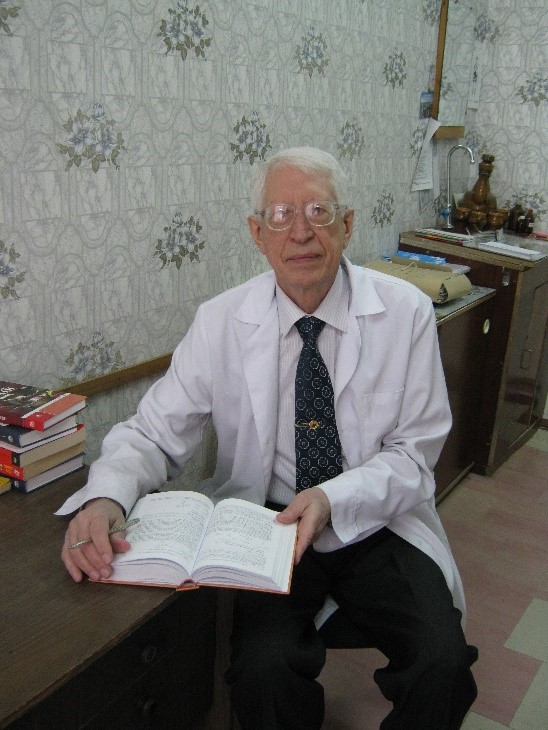
Dr. of Chem. Sciences, Professor, Honored Professor of Vasyl’ Stus DonNU Igor SHPANKO has been successfully working at the department for more than 50 years

Doctor of Chemical Sciences, Professor Olena SHVED has been working at the department for almost 40 years. From 2015 to 2018 she was acting head departments.
Its scientific group included future teachers of the department M. Sinelnikova (senior lecturer), V. Usachov (Candidate of Chemical Sciences, senior lecturer), Yu. Bespalko (Candidate of Chemical Sciences, Associate Professor)
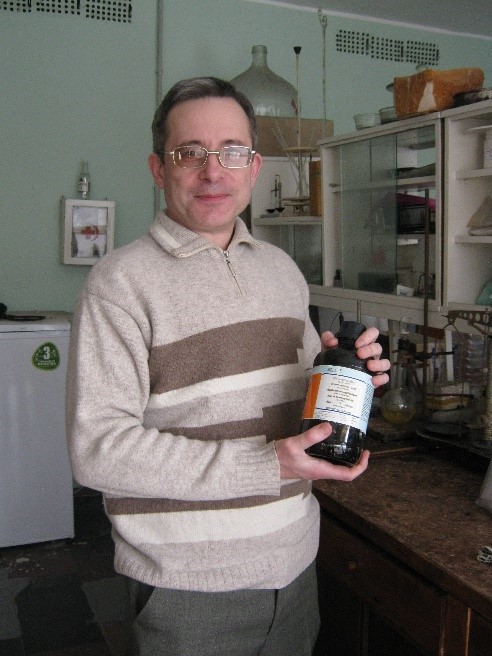
Until 2014, the associate professor of the department was its 1984 graduate – Ph.D. chem. Sciences Igor SEREBRYAKOV
At present the scientific school is working at the department: development of quantitative theory of reactivity of organic compounds (Professor, Doctor of Chemical Sciences O. Shved, Professor, Doctor of Chemical Sciences I. Shpanko). The scientific work is aimed at studying non-catalytic and catalytic reactions of oxiranes with proton-donor nucleophiles, studying the mechanism of nucleophilic opening of the oxiran cycle, developing the theory of correlation analysis, creating new materials based on epoxy compounds of various morphology, including nanomaterials.

Наукова група з органічної хімії включає досвідчених професорів Шпанько І. В. та Швед О. М., молодих науковців Беспалько Ю. М. (канд. хім. наук, доц.), Ситник Н. С. (зав. лаб, викл.), Ютілова К. С. (ст. викл.), Калінський О. М. (ст. викл.), Бахалова Є. А. (аспірант) та магістрантів і бакалаврів


На теперішній час наукова група з органічної хімії тісно конгломерована з науковими групами з неорганічної та аналітичної хімії
Молоді науковці починають свій науковий шлях із студентських років з початку у складі студентських наукових гуртків, при виконанні курсових та магістерських робіт
Our graduates successfully work in a specialty in various fields of chemical production, analytical laboratories, are engaged in teaching work and scientific activity.
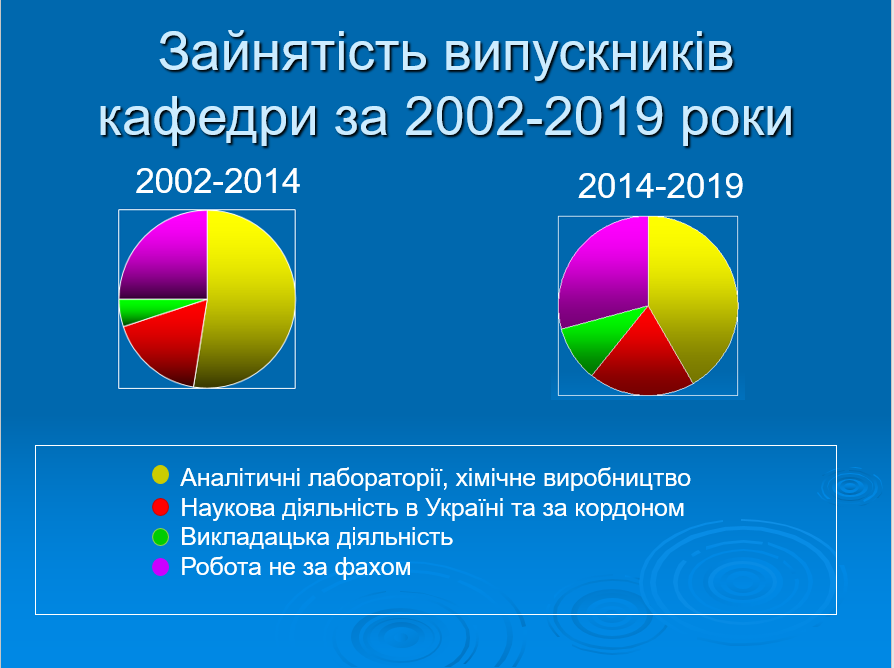
Department of Analytical Chemistry
Since its foundation in 1966, the Department of Analytical Chemistry has become a scientific and training center for the work of analytical chemists in Donetsk and Eastern Ukraine. Its founder and the first head was Ivan Shevchuk (09/09/1930 – 05/18/2008), Doctor of Chemical Sciences, Professor, Honored Professor of Donetsk National University, Academician of the Academy of Sciences of the Higher School of Ukraine, Cavalier of the Order of Honor. Over the 37 years of Shevchuk’s leadership at the Department of Analytical Chemistry, 22 Candidates of Sciences, 2 Doctors of Sciences, 3 Doctors of Sciences for foreign countries, and more than 500 specialist chemists-analysts for different countries have been trained.
Head of Department of Analytical Chemistry

Ivan SHEVCHUK, head of the department in 1966-2003

Antonina ALEMASOVA, head of the department in 2003-2014

Serhii RADIO, acted as the head of the department in 2014-2016
Shevchuk I. was born on September 10, 1930, in the village Vovchynets of Vinnytsia Oblast. In 1950-1955 he studied at the Faculty of Chemistry of Taras Shevchenko Kyiv State University. From 1955 to 1960 he worked as the chief of the central factory laboratory of the Cherkasy Chemical Reactors Plant. From 1960 to 1965 – the head of the laboratory in the Donetsk unit of the Institute of Pure Reagents, from 1965 to 1966 – the head of the laboratory of the All-Union Scientific Research Institute of Phosphors and especially pure substances (Stavropol). In 1966 he became the founder of the Department of Analytical Chemistry of Donetsk State University and was one of the sponsors of the chemical faculty of the University. He headed the department until 2003 and then worked as a professor. He worked at the university for almost 42 years. In 1964 he defended his dissertation, in 1970 – a doctoral dissertation in the specialty 02.00.02 – “analytical chemistry”. Since 1971 – Professor, since 1994 – Academician of the Academy of Sciences of the Higher School of Ukraine, Professor Emeritus of Donetsk National University.
For the first time in Donbass he founded a scientific school of chemical analysts. Professor Shevchuk I. was a member of the Scientific Councils for the PhD and Doctoral Theses of Ukraine, Belarus, Russia, and was a member of the All-Union Commission on Extraction and the Commission on Extraction of the Russian Academy of Sciences. Under the direction of Professor Shevchuk I., a scientific direction was created in the field of basic research of ionic associates, separation and concentration, rapid analysis of environmental objects, technical and biologically active substances. He was the head of the scientific school “Separation, concentration and rapid analysis of non-ferrous, rare metals and biologically active substances”.
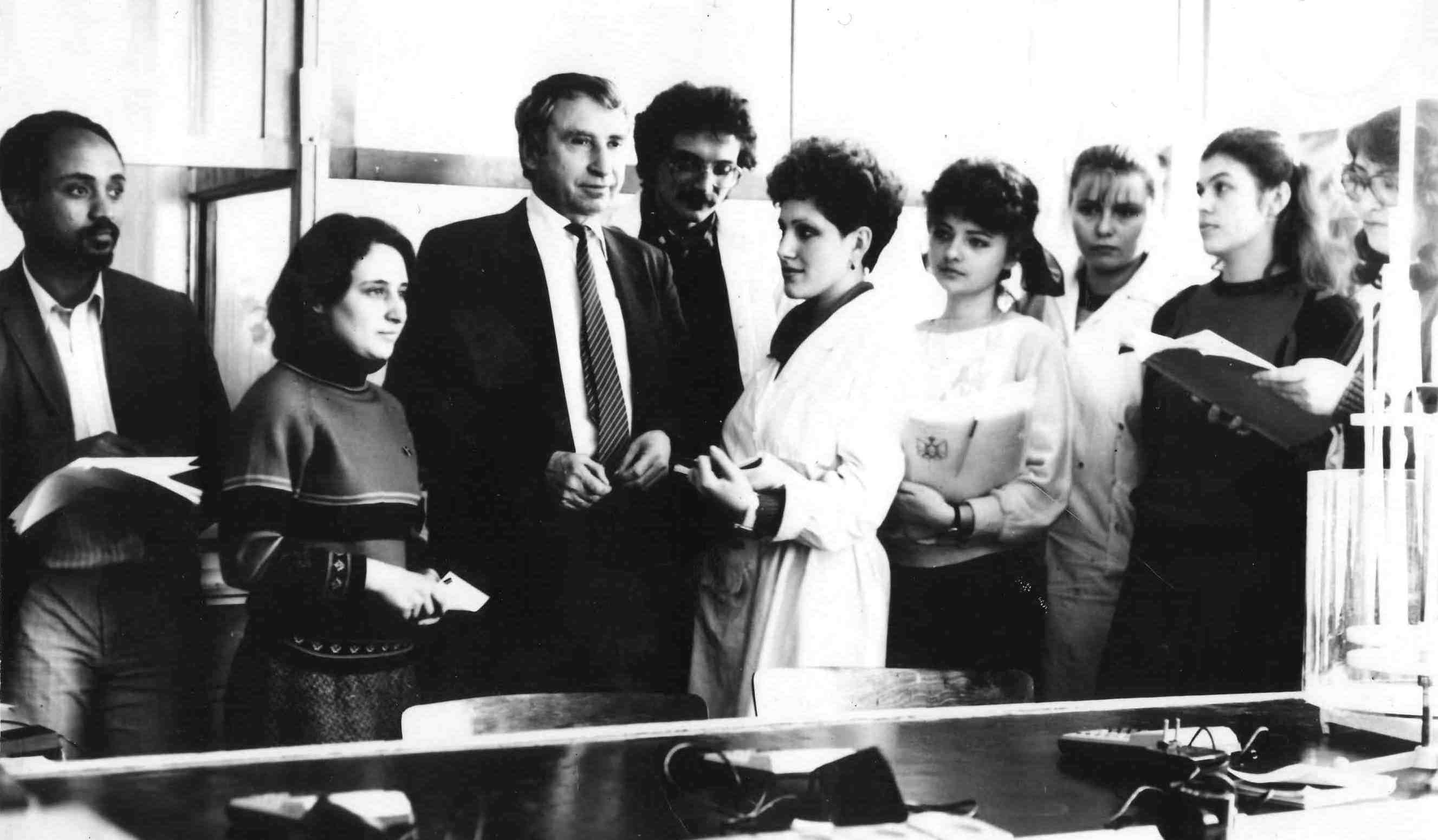
Professor I. SHEVCHUK with students of the Department of Analytical Chemistry
On the basis of analytical research of products of coke chemistry, Professor Shevchuk I. with the staff of the department proposed a method of production and analysis of pure chemicals. Its invention is the basis of the technology of obtaining pure rodanisty sodium, which is used to produce artificial fiber, and which made it possible to exclude its supply from other countries. Theoretical developments, performed under the guidance of Professor Shevchuk I. by the staff of the Department of Analytical Chemistry of Donetsk University, belong to the field of solutions and complex compounds, the chemistry of reagents, and substances of special purity. For the first time, the theory of the spatial compatibility of complex ions was developed, the extraction of highly charged compounds was predicted and carried out, the reactions of the transformation of color associates were opened and their stability was studied. Many of his works are devoted to improving the environmental status of Donbas. For many years, the staff of the Department of Analytical Chemistry under the leadership of Shevchuk I. conducted international and Ukrainian levels of work on the certification of standard samples of alloys. Under his leadership, a large number of new techniques have been developed that have been implemented in the analytical laboratories of radio electronics enterprises, chemical, metallurgical industries, medical and environmental institutions. He was the organizer of many scientific conferences.
From 2003 to 2014, the department was headed by a student of Professor Shevchuk I. – Alemasova Antonina, Doctor of Chemical Sciences, Professor, Academician of the Academy of Sciences of the Higher School of Ukraine.
After moving to Vinnytsia in 2014, Radio Serhii, Candidate of Chemical Sciences, was appointed Acting Head of the Department. The staff of the department was formed “from scratch” – the candidates of chemical sciences worked on the positions of associate professors Leonova N., postgraduate research assistants Yany M. and Mariichak A. in the positions of assistant professors. In 2015-2016, Krutko I., Candidate of Technical Sciences, Associate Professor, worked in the 2015–2016 years, and since 2016 senior teacher – Rumiantseva Zh.
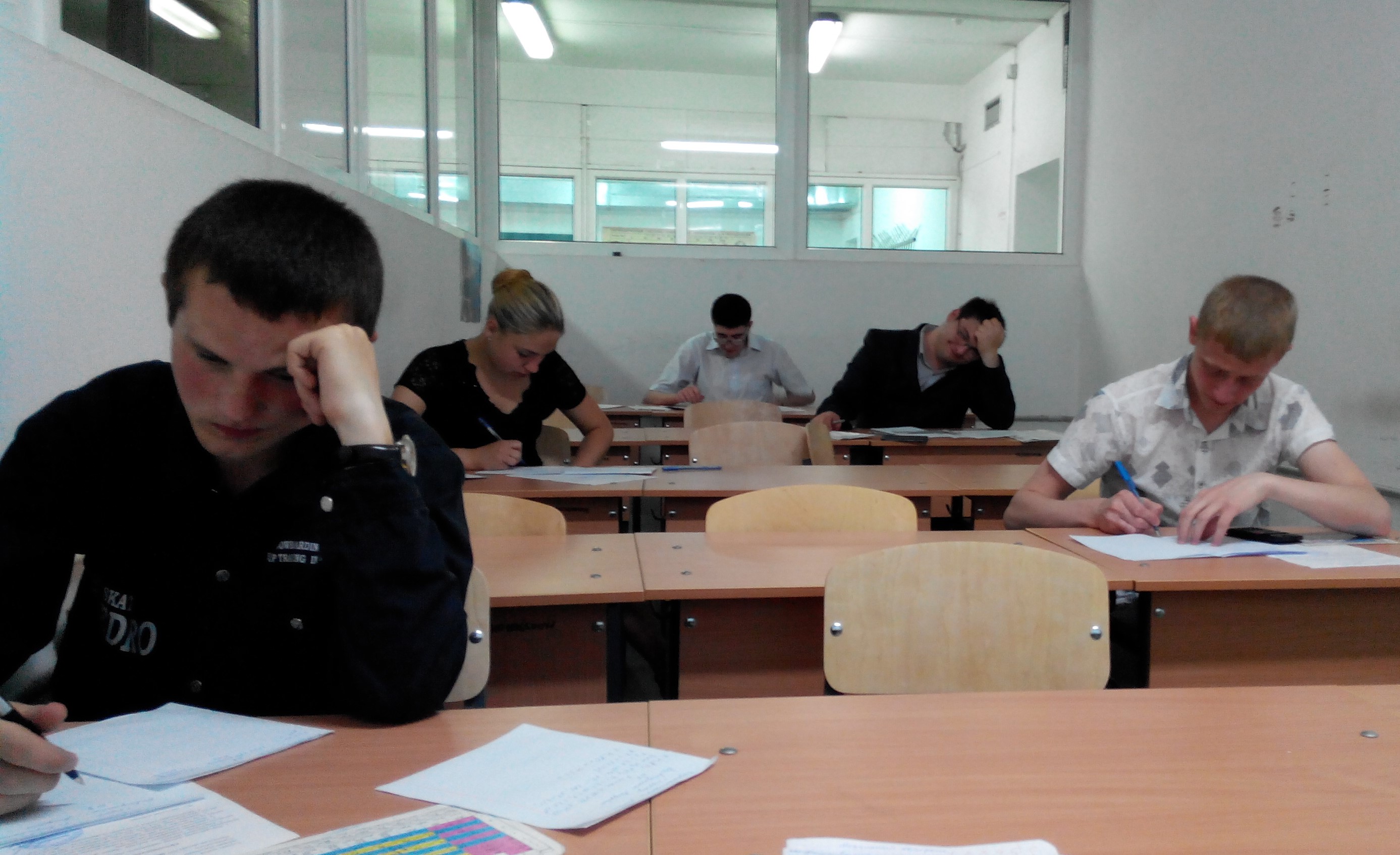
First-year students at the first exam in the discipline “Analytical Chemistry” in Vinnytsia (room 214, 2014-2015 academic year, 15.06.2015)
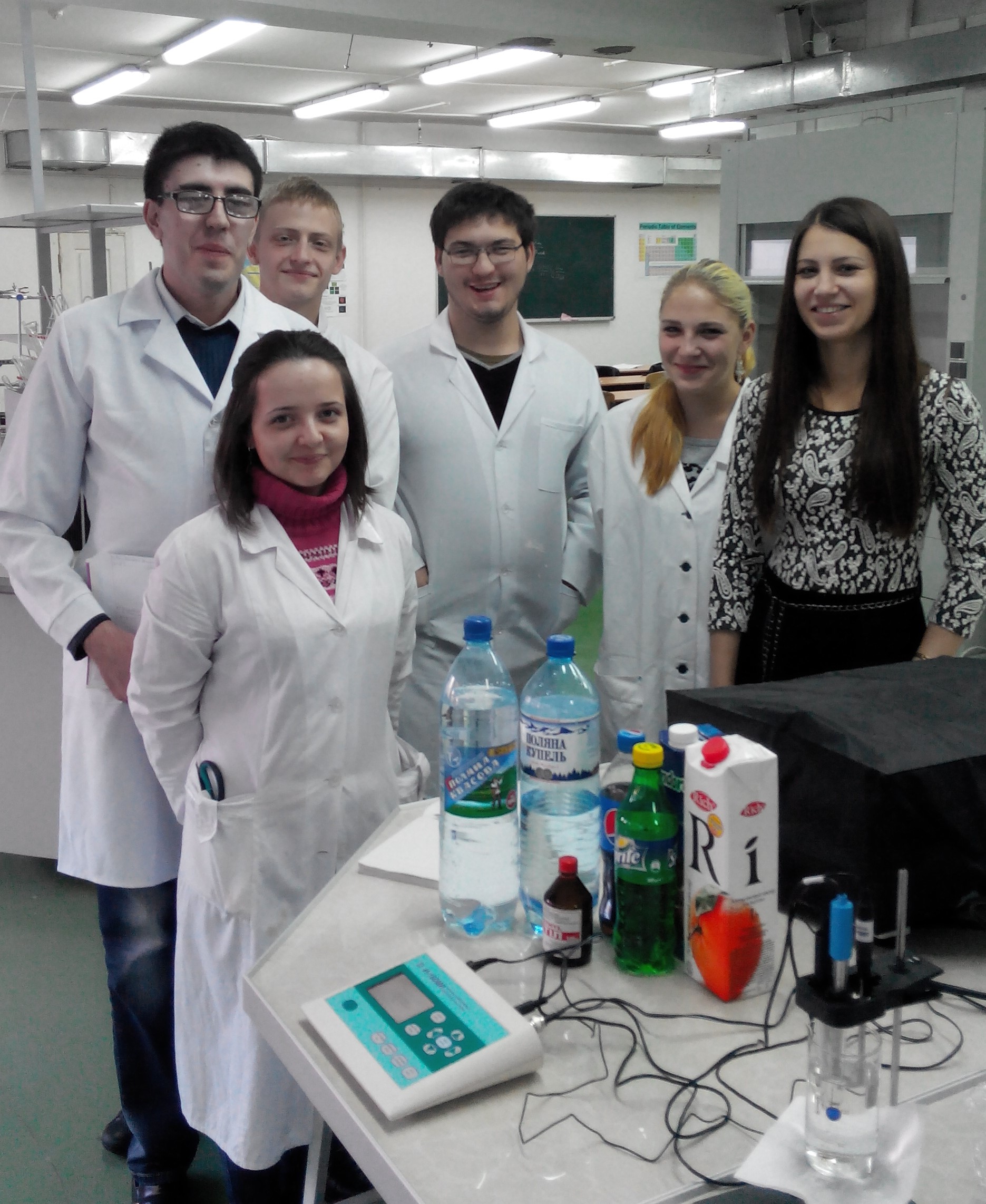
Second-year students in the Large Chemical Laboratory before laboratory work on ionometry with laboratory assistant K. Eroshyna and assistant Yu. Mariichak (2015-2016 academic year, October 2, 2015)

The first graduate-master of the Speciality “Analytical Chemistry” in Vinnytsia Julia CHERTOVA together with the scientific adviser of Serhii RADIO
Now Julia works as a senior forensic expert in the sector of physical and chemical research of the Department of Research of Materials, Substances and Products of the Donetsk Research Forensic Center of the Ministry of Internal Affairs of Ukraine, Mariupol
In 2016, the Department of Analytical Chemistry was merged with the Department of Inorganic Chemistry, and the newly created department was named the Department of Inorganic and Analytical Chemistry.
During 2014-2016 and after the unification, the department trained bachelors in the specialty “Chemistry” and undergraduates in the specialty “Analytical Chemistry”. The scientific-pedagogical staff of the department taught courses “Research methodology in analytical chemistry”, “Modern analytical chemistry and development of society”, “Chemometry, chemical metrology and mathematical methods in analytical chemistry”, “Chromatographic and other methods of separation, concentration”, “Modern ecological analytical chemistry”, “Problems of chemical analysis of natural and industrial objects”, “Atomic absorption spectroscopy in the analysis of natural and industrial objects”, “Molecular spectral analysis” for students of the Master’s Degree in Analytical Chemistry, as well as courses in Analytical Chemistry, Theoretical Foundations of Electrochemistry, Ecological Chemistry, Structural and Supramolecular Chemistry, Environmental Chemistry, and Spectral Analysis Methods for Students Bachelor’s Degree in Chemistry and Analytical Chemistry course for students of Bachelor’s Degree in Biology and Ecology.

